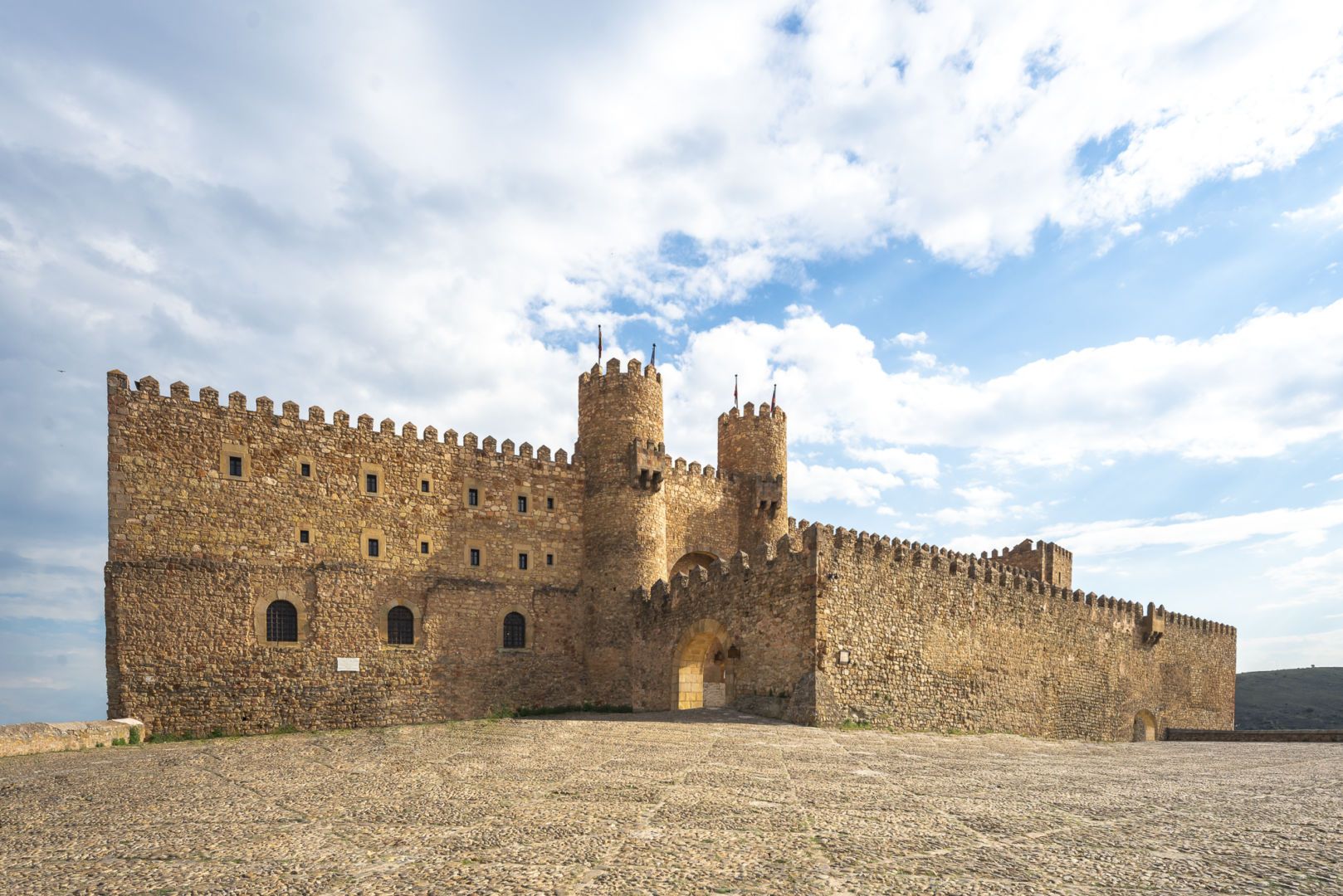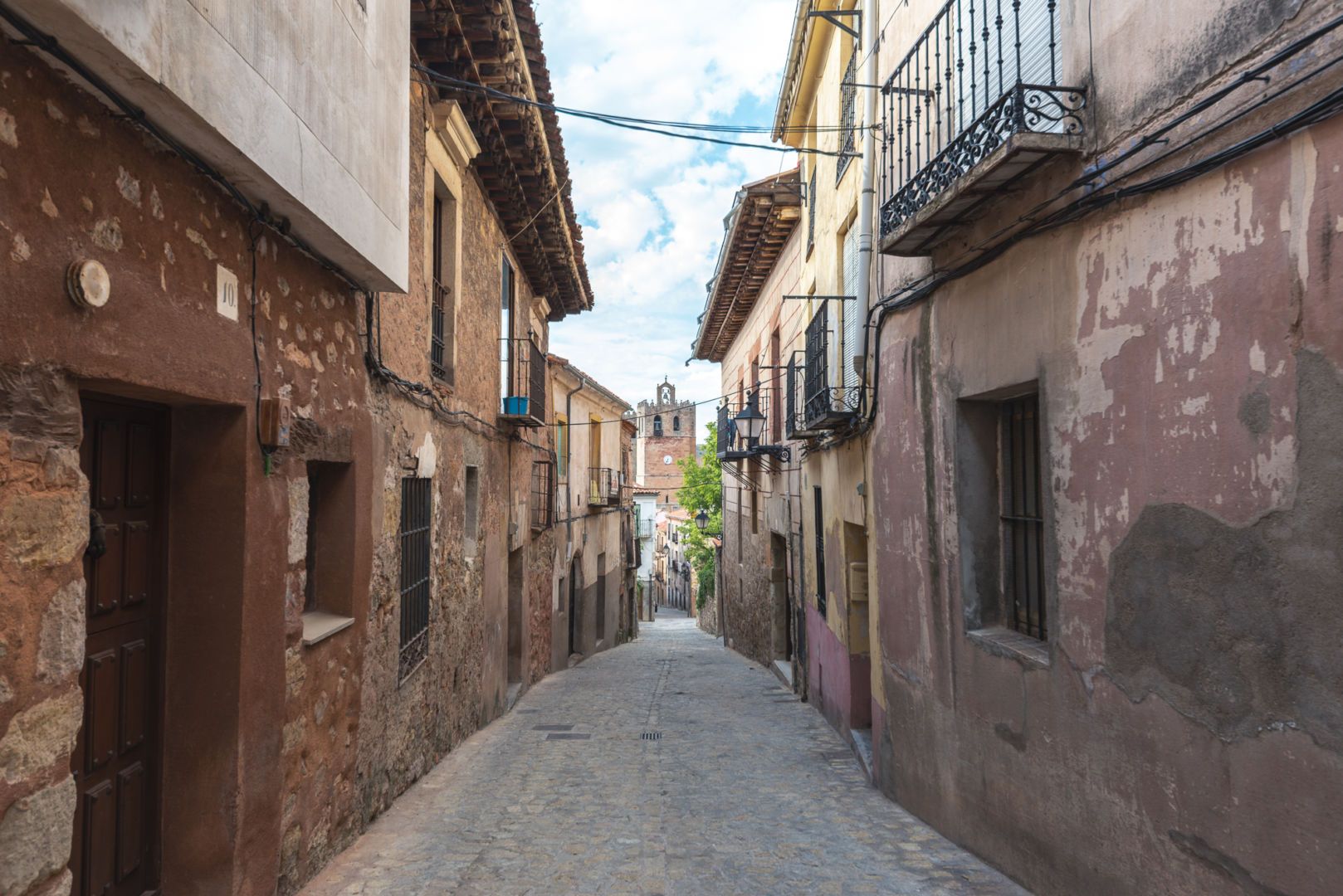n arrival in Sigüenza, we are welcomed a landscape of hilltops stretching out before us many of these are crowned by ruined fortresses which in other times constituted the outer parts of defensive ring around the mitered city of Sigüenza.
The city of Sigüenza looms into view, spreading out over the slopes of a hill of modest altitude.
Of Celtiberian Arevaco origins, the noble and faithful city of Sigüenza has preserved over many centuries and transformations the Celtic roots of its name, which take its history back to the very origins of Spain.
During Roman times, the city was known as Segontia. Then, after the Visigoth period, the Moslems reinforced its strategic importance through the construction of excellent defenses, dominating the region until, Bernardo of Agen, a fierce Frenchman, half Cluniac monk, half warrior, seized the city and expelled the Moors, the 22 January 1124, the day of Saint Vincent Martyr.
LThe City of the Doncel has powerful symbolic significance. In ancient times it was one of the key points in the defensive system constructed to close off the frontier with Islam.
The city is all so the birthplace of distinguished cardinals and bishops of renown, whose tombs decorate Sigüenza Cathedral, that precious jewel of outstanding artistic splendor.
Dominating Sigüenza is the historic castle, palace of the bishops and lords of the city until recent times, and witness to terrible blood-Ietting in Moorish times, as well as silent testimony to the tears of Doña Blanca of Bourbon.
n the center stands the magestic cathedral-fortress, of severe, imposing architecture, dominating, like a giant warrior, the surrounding huddle of buildings, the cubes of the city walls and the church towers, whose silhouettes stand out proudly against the blue of the sheltering sky. This Castilian city is, in the words of Alfredo Juberías, the «city of moonlight and silence», of clear blue skies, perfumed by aromatic plants and refreshed by the air of its extensive pinewoods, its leafy «Alameda» along the banks of the Henares.
Sigüenza is a living art museum, owning masterpieces of Romanesque, Cistercian, Gothic, Renaissance, Plateresque, Baroque, Neoclassical art…
Its churches, monasteries and convents, the University of San Antonio de Porta Coeli, the Alameda del Obispo Vejarano, all speak of past greatness and present beauty.
We are talking about one of the most beautiful urban and architectural cities Center’s in Spain and we can admire one of the oldest Spanish Cathedrals.




